CIA, Guns, and Rasta: Inside the Making of Reggae’s Most Iconic Film
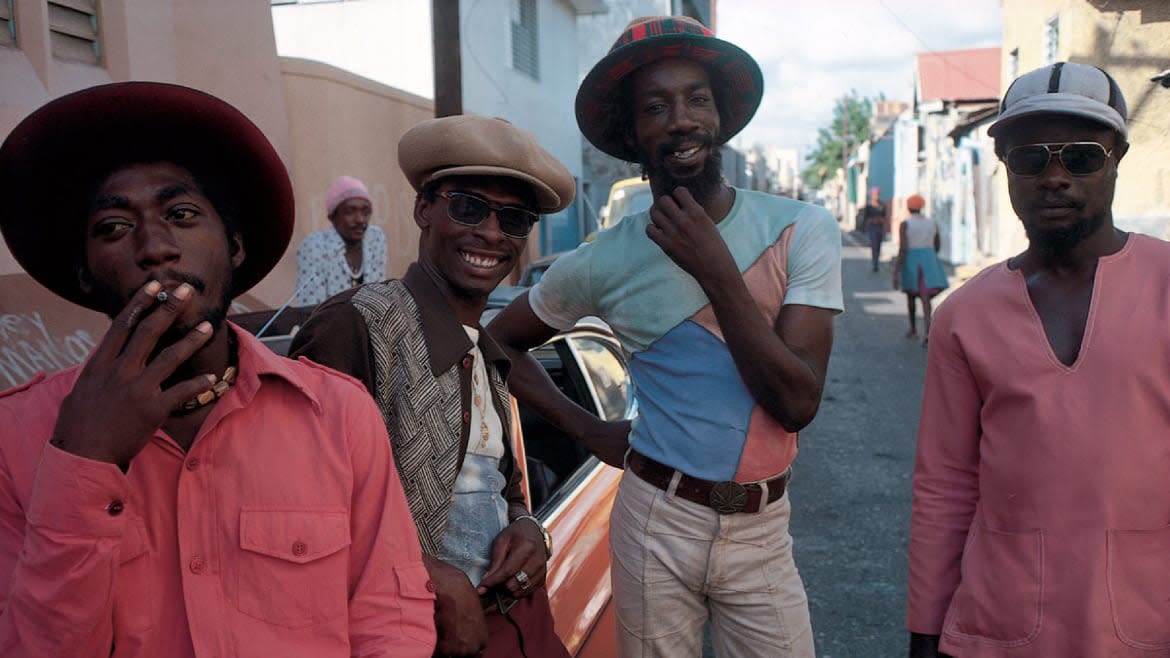
Rockers is, arguably, the finest reggae movie ever made.
The 1978 film tells the story of a financially struggling drummer, Leroy “Horsemouth” Wallace (portraying himself), who buys a motorbike with the intention of making extra money by distributing producers’ records to shops across the island. When the bike is stolen by an upper-class organized crime ring, Horsemouth and his friends set out to retrieve it and take back most of the criminals’ ill-gotten goods and distribute them to Kingston’s ghetto dwellers.
The skeletal plot is best summarized as a Jamaican reinterpretation of the legend of Robin Hood meets Italian director Vittorio De Sica’s Bicycle Thieves, yet Rockers mesmerizes as a kaleidoscopic view of late '70s reggae, one of the most fascinating eras in Jamaican music’s trajectory, and in its respectful, almost mystical presentation of Rastafarian culture, a relatively unknown way of life at the time of the film’s international debut.
Made on a budget of $250,000 and directed by Theodoros “Ted” Bafaloukos, Rockers caused a near riot at the Cannes Film Festival in 1979 when crowds clamoring for tickets to the four scheduled sold-out screenings jammed the streets surrounding the theater and refused to leave. A review in the French daily Le Monde enthused, “Rockers is not a film, it is a work of art. So good it is difficult to believe, yet it is real.”
Rockers secured U.S. distribution in 1980; 40 years later, the film continues to be widely screened, critically lauded, and now, meticulously documented in a spectacular 320-page coffee table book, published by Gingko Press. Rockers: The Making of Reggae’s Most Iconic Film, was initially written by Bafaloukos in 2005 (he died in 2016 at age 70, due to complications from non-Hodgkin’s lymphoma). Featuring many previously unseen, stunning black and white and color photos taken in New York City and throughout his travels to Jamaica in the mid to late '70s, the Rockers book chronicles Bafaloukos’ personal narrative as vividly and insightfully as it does the landmark film bearing its name.
Reggae Legend Peter Tosh’s Murder Was Just the Start of His Family’s Troubles
Carayol, a French reggae historian and the book’s curator and editor, brought the project to Gingko’s David Lopes. “We pretty much left what Ted wrote in extenso; I was blown away by his writing style, very funny yet informative and it went beyond the film; it’s not just for reggae fans, it speaks to everybody,” Carayol told the Daily Beast. “The chaotic behind-the-scenes story was entertaining enough, but Ted's memoir tells his tale from being born to a family of Greek sailors to landing in NYC. It’s almost like a Jamaica/New York version of Mean Streets, illustrated with photographs. This book could have come out ten years ago or twenty years from now, it doesn't really matter. It is a great testimony at any point in time.”
A Greek immigrant living in lower Manhattan in 1975, Bafaloukos took the first step in his journey to making Rockers in Brooklyn, the largest outpost of Jamaicans living off the island. Bafaloukos accompanied New York magazine writer Mark Jacobson to Brooklyn for a party at the Paradise Cove nightclub/catering hall to shoot photos for Jacobson’s story about Jamaican culture in New York City and the island’s emergent reggae music scene.
Bafaloukos was so captivated by the headlining performer, Jamaican melodica master Augustus Pablo, whose trademark “far east” sound is characterized by minor chords played over cavernous dub rhythms, that he stopped taking photos. “What could a picture do for anyone who wasn’t there to hear?” Bafaloukos writes in Rockers. “How could anyone describe that sound? Every note was transformed as if by magic into a breathtakingly complex melody that kept taking unexpected turns, keeping you in a state of suspense. Everybody was in a trance floating inside that young man’s dreamscape.”
Bafaloukos would unexpectedly hear reggae again shortly thereafter while visiting a friend in Chicago. They ventured downtown to the city’s hippest club and joined the line for entry, unaware of the band that was playing until they saw the name stamped on the ticket: Bob Marley and The Wailers.
Bafaloukos described the experience as being beyond entertainment: “This was the sound of the whip hitting the air… causing waves of compressed air to hit your chest, their timing one with your heartbeat, needle-sharp fragments of sound hitting your nerves. And Bob Marley’s raspy voice pulling the melody out of a bottomless pit. Every word fired off like Morse code going straight to your brain to wreak havoc on your emotions. This was take it or leave it conviction bursting out, looking for believers. It was something extraordinary. Something unbelievably good.”
Bafaloukos was a fan of Jamaican director Perry Henzell’s breakthrough 1972 film The Harder They Come, starring Jimmy Cliff, and its soundtrack, which introduced reggae to America. He was deeply affected by the Jamaican music he was hearing in New York City and intrigued by the (sensationalized) articles that began appearing in tabloids about Jamaica’s Rastafarian movement. He knew something significant was happening in Jamaica, so he decided to go there, take photos and make a movie.
The years 1975-1980 are regarded as the most violent in Jamaica’s history due to the escalating polarization between Jamaica’s two major political parties, the socialist leaning People's National Party (PNP) and the pro-American Jamaica Labor Party (JLP). PNP leader Michael Manley (Jamaica’s prime minister between 1972-1980, 1989-1992,) openly praised Fidel Castro while the CIA supplied weapons to the JLP vigilantes led by Edward Seaga (prime minister 1980-1989). Each party armed young male supporters with guns as a means of intimidation and retaining territorial control, with the poorest communities in Jamaica’s capital, Kingston, bearing the brunt of this horror.
Bafaloukos made his first trip to Jamaica in December 1975, traveling with a New York City-based Jamaican friend, Lister Hewan-Lowe, staying at a Kingston home owned by Lister’s aunt. Despite Bafaloukos’ benevolent focus on music and a potential film, he couldn’t escape Kingston’s tense partisan climate. He visited Bob Marley’s Kingston home and took photos of various musicians, the surroundings, etc., until Marley told him to stop. While talking with Wailers’ bassist and drummer, brothers Family Man and Carlton Barrett, Marley and a few associates accused Bafaloukos of being “a CIA spy, a white criminal, a cunning saboteur” and demanded his film. (Afterwards, Marley expressed regret for the incident.) Days later, in the parking lot of the Jamaica Broadcasting Company, Bafaloukos’ notebook was snatched from his shirt pocket by a middle-aged man who held it aloft, shouting “CIA, CIA.” Surrounded by machine gun toting soldiers, Bafaloukos was arrested on the pretext he was a CIA agent, his passport taken. He was released within a few hours and his documents were returned the next day, but Bafaloukos' initial Jamaica sojourn had come to an abrupt end.

Despite the troubling allegations and his brief detention, Bafaloukos “had fallen in love with Jamaica, not just with the music or the physical beauty of the place. I had found people there who had the rug pulled from under their feet so long ago they couldn’t even be sure how it was done and then they had gone on to lift themselves up into a spiritual plane where need, no matter how urgent, couldn’t pull them back down.”
Bafaloukos attended the Dec. 5, 1976, Smile Jamaica concert, held as a means of subduing the mounting bloodshed. Three days earlier, Marley, the concert’s headliner, along with his wife Rita and manager Don Taylor were fired upon at his home, ostensibly for Marley’s perceived PNP support. Marley performed anyway, then left the island for 18 months. The dramatic turn of events affected Bafaloukos’ vision for Rockers, although he never asked Marley to be in the film, believing his prominence would overshadow the project. “I can’t figure for the life of me why anyone would want to shoot Bob Marley. I can’t for the life of me figure out where all this gun lust was coming from. One thing I knew, right there and then, if I was going to make a movie, there wouldn’t be any guns fired in it. Enough was enough,” Bafaloukos penned.
Bafaloukos initially wanted to make a documentary but then decided against it. “I wanted the music to take me to the film, but I didn’t want the film to be about music. The story had to wait. It would reveal itself once the locations, the cast, and the music fell into place,” Bafaloukos writes. “Ted wanted the music heard in many ways: live, off scratchy 45s, in studios, off mighty sound systems, an a cappella chorus with drums in a river, an a cappella solo at night on a ruin,” adds Eugenie Bafaloukos, Ted’s widow. Eugenie was Rockers’ costume designer and is consulting editor of the Rockers book. Cherry Kaoru Hulsey, the (Japanese) widow of Rockers’ late producer Patrick Hulsey, responsible for administering, curating and protecting Rockers’ interests, is the book’s senior editor.
Rockers opens with a tightly framed static shot of Ras Michael and The Sons of Negus Nyabinghi drummers supporting vocal group The Abyssinians, who are in the background perched above them, singing their timeless African repatriation anthem “Satta Massagana.” Rastaman Higher (Ashley Harris) who provides Rockers’ spiritual guidance, steps forward and speaks directly into the camera, offering greetings and a message of unity in Jamaican patois (with standard English subtitles, which are used throughout the film).

One of Rockers’ most haunting musical moments features reggae icon Burning Spear singing “Jah No Dead,” on the ruins of a former prison destroyed by a hurricane. The song is an affirmation of faith for Horsemouth, who’s seated beside him, their spliffs in hand, Spear’s sole accompaniment is the tranquil ebb and flow of the Caribbean Sea.
Spear’s summer 1976 concert in Central Park played a significant role in shaping the Rockers cast. Bafaloukos recalled the night: “On stage Spear was like no other performer I’ve seen before or since. His magnificently resonant voice spreading through the evening air gave the impression it could soar around the world. Never before had there been such a brilliant lineup of reggae musicians outside of Kingston. It was an unprecedented event organized by Spear’s producer Jack Ruby.”
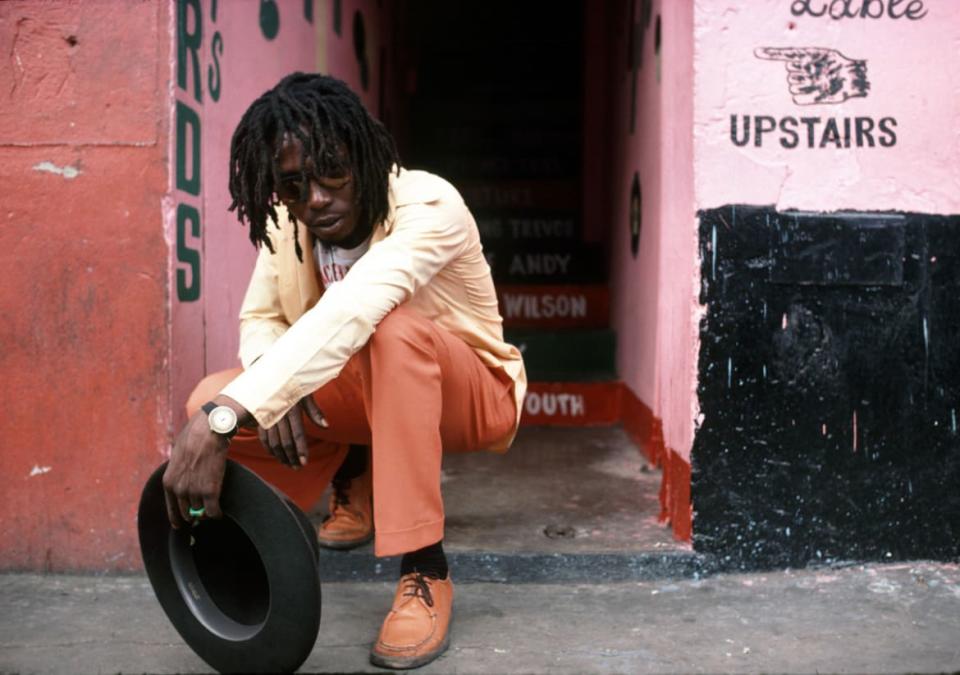
Spear’s backing band included bassist Robbie Shakespeare, guitarist Earl “Chinna” Smith, organist Bernard “Touter” Harvey, saxophonist Richard “Dirty Harry” Hall—all of whom are featured in Rockers—and drummer Horsemouth, whose kinetic personality, Bafaloukos presciently knew, would make him a great lead, despite his lack of acting experience. “This wasn’t acting, it’s being in a movie. It’s different. It’s a roots take,” clarifies Eugenie. “The reggae musicians who played themselves were seasoned performers who had already cultivated their public face in the pressure-cooker of Kingston reggae.”
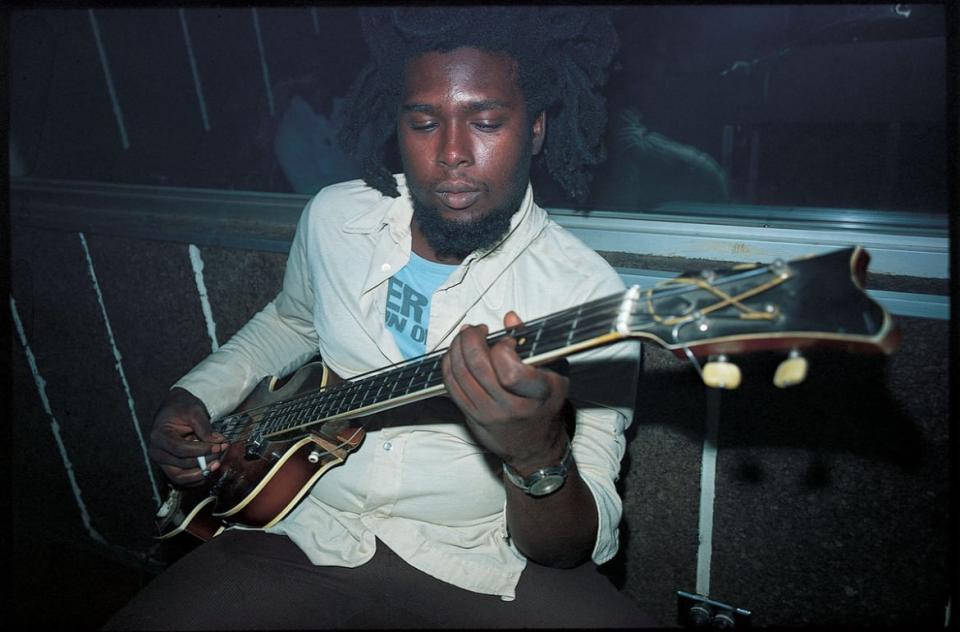
Several luminaries in the Rockers’ ensemble have since passed away, among them, the dapper and legendary crooner Gregory Isaacs, who sells Horsemouth his bike and cracks the code to the safe in the culminating robbing-from-the-rich sequence (to the jubilant sounds of Justin Hinds and the Dominoes “Natty Take Over”). Jack Ruby, who produced that track, appears in several scenes including a recording session at Kingston’s Harry J Studios with singer Kiddus I intently laying down “Graduation in Zion.” The charismatic Jacob “Killer” Miller was undoubtedly poised for greater renown as a vocalist (and actor) when he died in a car accident in 1980, at just 27. Miller was the lead singer with the band Inner Circle, and they perform in a scene shot at an upscale resort (with perplexed tourists wondering aloud “What kind of music is this?”) and contribute two songs to the soundtrack, including the concluding theme “We A Rockers.” Dirty Harry was murdered in a Manhattan robbery several years after Rockers was filmed. Harry was immortalized in the segment shot at Kingston’s Turntable Club where he forcibly takes control of the DJ booth, replacing the soul selections with reggae; when police intervene, he bellows, “Remove yah.”
Bafaloukos’ descriptive writing, rife with observations on history, culture, music, and personal reflections, takes the reader through Rockers’ fascinating course, which includes numerous behind the scenes challenges. There were shakedowns for money by political gangs; cast and crew members were robbed and threatened; $5,000 was stolen from the Rockers office in Kingston, bullets fired into the ceiling. The Jamaican army surrounded Kingston’s Carib Theater as a concert scene was filmed inside, then plainclothesmen with submachine guns moved in. Bafaloukos was reproached for exploiting Black culture; Horsemouth was reprimanded for being a white man’s patsy. As filming wound down, Horsemouth demanded more money and threatened to report Bafaloukos and his crew to Jamaica’s “Minister of Mobilization.” A plot to steal the Rockers’ soundtrack tapes after their completion at Harry J studios was thwarted when decoy boxes were loaded into Bafaloukos’ vehicle. The motorbike illicitly taken in the movie was actually stolen from a hotel parking lot before filming was completed; Bafaloukos credited Dirty Harry and Horsemouth as the theft’s masterminds.
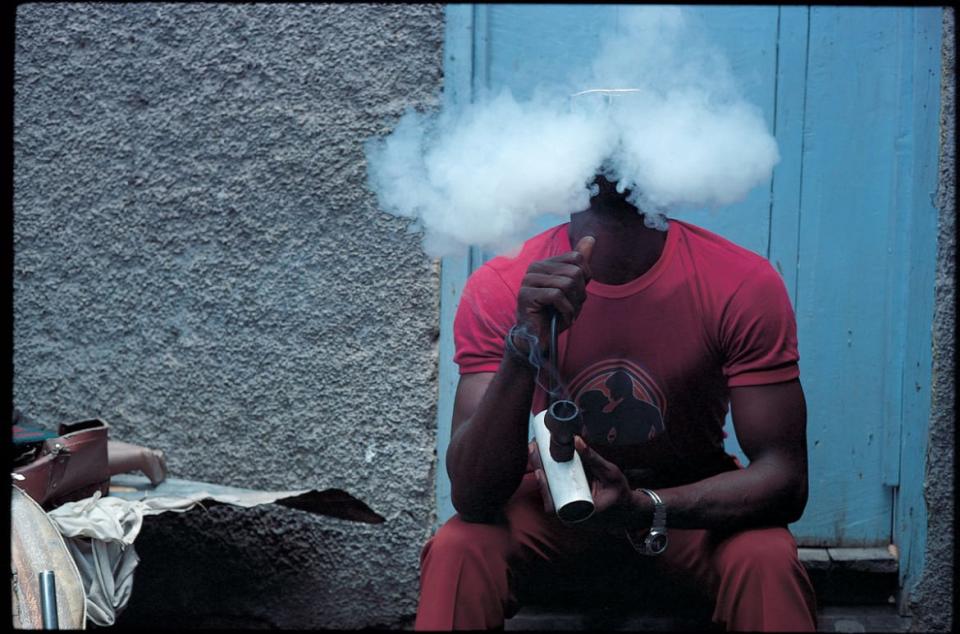
Marley asked to see Rockers prior to its theatrical release. Before the screening at Harry J Studios, an associate of Marley’s expressed concerns about the film being a “propaganda device designed to defame Rasta.” Marley left the room with two men and went outside where “they cornered Patrick demanding answers and explanations about money. Wanting to make sure we took good care of the people who worked on the film. Patrick, from what he told me later, was well-vexed.” Marley, ultimately, said he liked the movie.
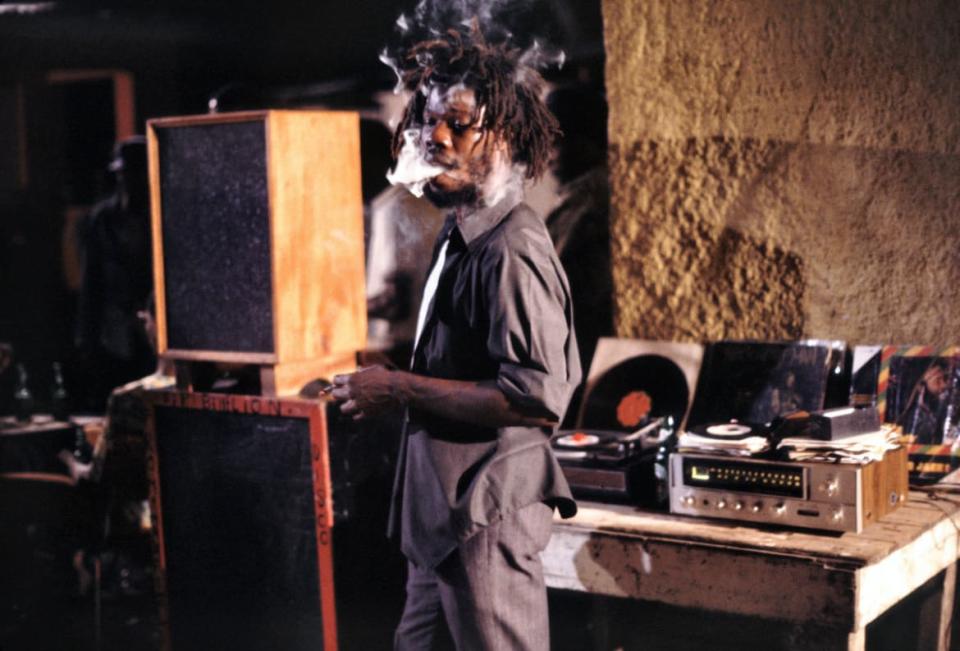
The difficulties Bafaloukos and his team encountered while shooting Rockers during one of the most volatile periods in Jamaica’s history renders the film an even more remarkable accomplishment and the book a consistently captivating read. Due to Rockers’ overwhelming popularity, Bafaloukos never wrote or directed another reggae movie. “Rockers was made in almost ninja-like anonymity,” says Eugenie. “We could ease in, shoot scenes, and slip away without too much fuss. A second effort by Ted, after Rockers’ success, wouldn’t be under the radar. Ted liked trailblazing; he never liked a beaten path. Also, he felt he had opened a portal for someone else to jump in, tell another story in a different voice and burst on the scene. It could still happen.”

Get our top stories in your inbox every day. Sign up now!
Daily Beast Membership: Beast Inside goes deeper on the stories that matter to you. Learn more.

 Yahoo News
Yahoo News 
